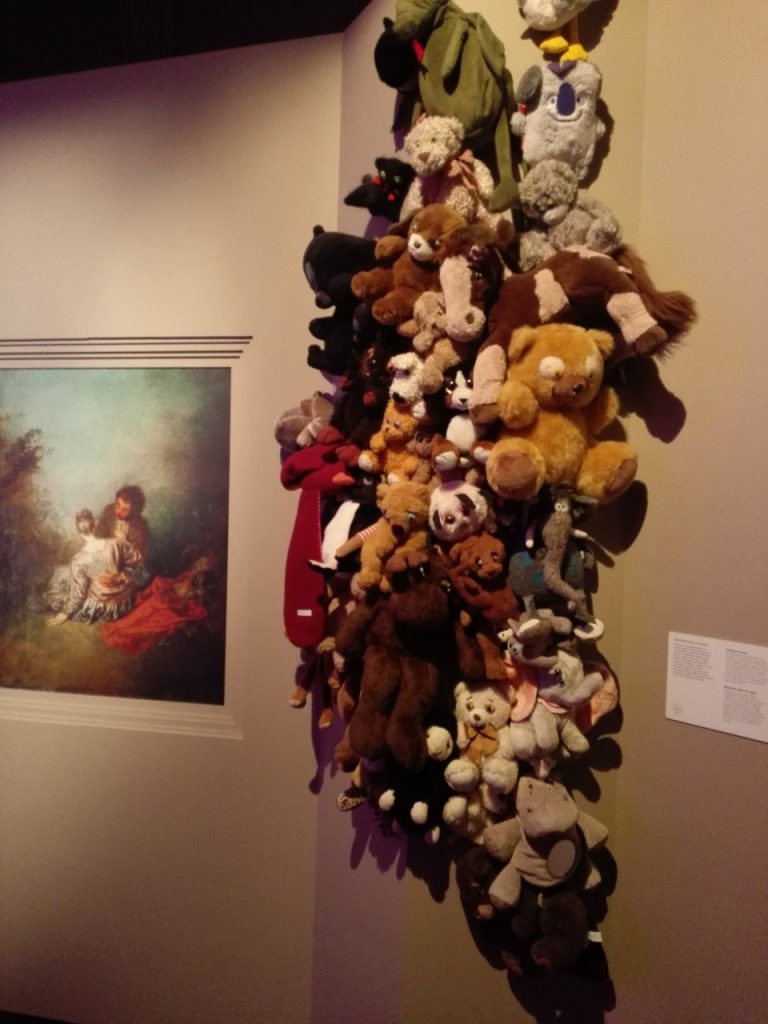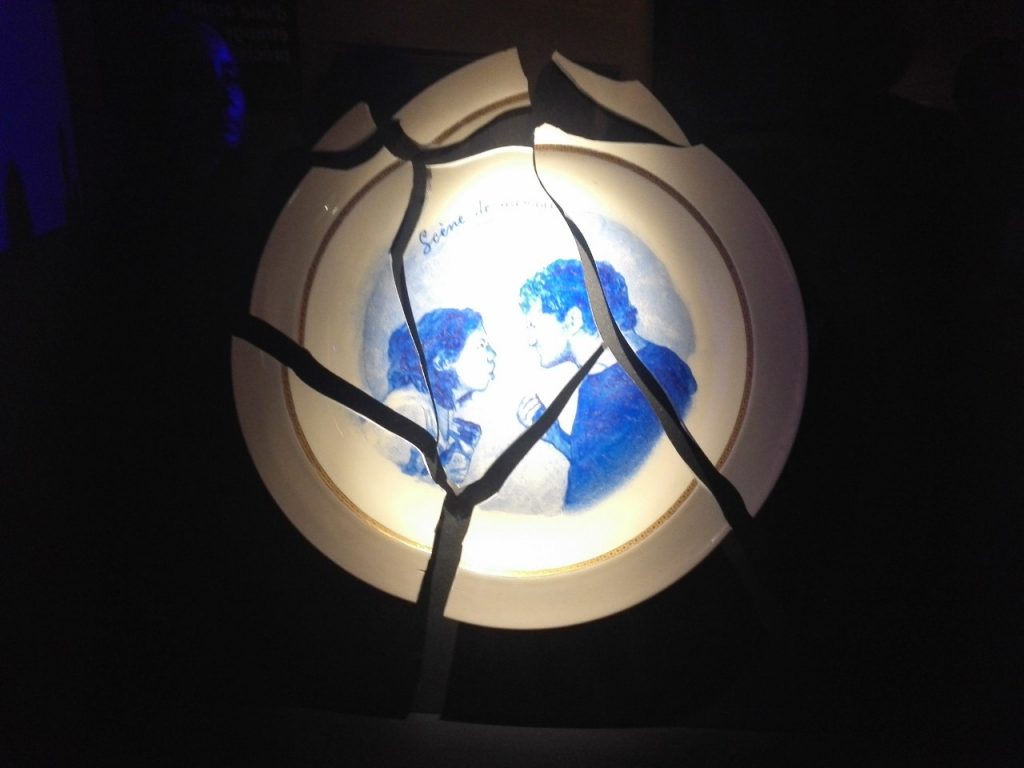
The “discovery museum”, or Palais de la Découverte, is trying to answer that question with this unusual and fun exhibition. And what a better place to show it than in Paris, the “city of love”?

After having passed by a giant vibrant and pulsating heart made out of feathers, to remind us of the emotions that love evokes in us, I entered the heart of the exhibition. Love is much more than passion though, as I discovered in the next room.
The English word “love” is vast and narrow at the same time. We may “love a spouse” and “love eating pizza” but the significance isn’t the same, is it? The exhibition therefore starts out by exploring the ancient Greek words for love:
eros – passion; storgê – family ties; agápê – unattached or spiritual love; philial – friendship, social ties.
These are then explained one by one through sculptures, paintings, teddy bears, installations, videos, poetry, love stories or legends. I walked through this labyrinth of objects, sounds, tales and music in awe.
Among the people representing agápê, Malala (who got the Nobel peace prize in 2014), Nelson Mandela and the lately so media exposed young Swedish girl, Greta Thunberg, were cited, among others.
As in spiritual love, it’s a giving of self that counts in agápê. We aren’t just bodies, but a mixture of spirit/soul, mind and body and all three must work together for true love to flourish and deepen, as older couples can testify of.
Unfortunately that’s a too often forgotten value in our consumption society where humans are easily objectified. The flipside of love is its use for a depreciatory purpose, such as it is in pornography or with sexual harassment, as has been highlighted in the recent MeToo movement.

Broken love
The second part of the exhibition concerns the scientific side of love through the works of sociologists, chemists, anthropologists and psychologists among others. It consists of doing tests and games to find out our level of empathy; how we react to online interactions and meetings; the consequences of lack or distorted childhood memories of parental love for example.
I discovered, in a short movie, that it’s the brain and not the heart that is the real centre for love. And what about the molecules and genes and their role in for example gender preferences? Well apparently no scientific explanation has been found for homosexuality or transsexual penchants or for that matter for paedophiles.
The teacup was used in a video to explain what was meant by consent. Do you want more tea? No? Really no? Yes do have some more tea… The victims’ apathy in many cases of rape was explained scientifically by the fact that it’s a bodily reaction to avoid heart attack! This clarification can be used in court cases where the victim is accused of consent when there was no consent but a fear for ones life.
Finally we got a historic/scientific explication of the clitoris. I learned that it was psychoanalysts such as Sigmund Freud who “killed” the clitoris and it wasn’t until 1998 that the organ was finally given its rightful place in the female body. An Australian doctor, Helen O’Connell, managed to scan it and show how it looks using 3 D. Now some researchers are looking for the famous G-point that doesn’t seem to exist though.
Apparently we all have similar sexual organs until 8 weeks old foetuses before the genders split in two to evolve into a girl or a boy. Unfortunately still 200 million girls worldwide have had their clitoris cut off (and sometimes been sown together). Genital mutilations are common in many parts of the world, mainly in Africa and in parts of the Middle East. It’s part of the “honour” system in patriarchal systems.
This exhibition is mostly made for adolescents and young adults who discover their sexuality. It covers many important areas especially in France where very little on this subject is taught in the schools. The classes present, with giggling girls and boys, seemed to enjoy it. But even adults can appreciate and learn from it.
Love encompasses a wide range of feelings, of dedication or lack thereof. The joy or, on the contrary, the traumas that it entails, show the importance of love and trust. “Love your neighbour as yourself”, the second command in the Bible, was a profound statement and is at the basis of the Human Rights Declaration.
Love, in its broader sense, is the glue that binds humans living together, whether in an opened and democratic society that claims gender equality, or within a family and among friends. The lack of it can also destroy a society as we’ve seen during Stalin’s purges in the former Soviet Union, Hitler’s holocaust, Mao’s cultural revolution to mention just a few.
Fortunately, some inscrutability still remains about finding the scientific answers for love and gender. Everything can’t be explained by genes or molecules as yet, which I am grateful for. Because what’s love without it’s mysteries?
If you can’t make it for Valentines, don’t worry; the exhibition is on until the end of August 2020 and Paris remains the City of Love par excellence!
Anne Edelstam
palais-decouverte.fr
#DelAmour
Avenue Franklin-Roosevelt, 75008 Paris
